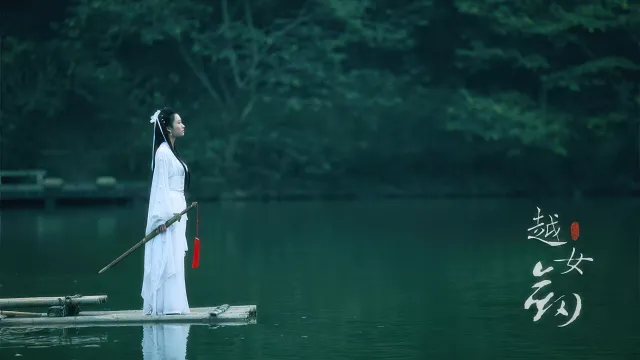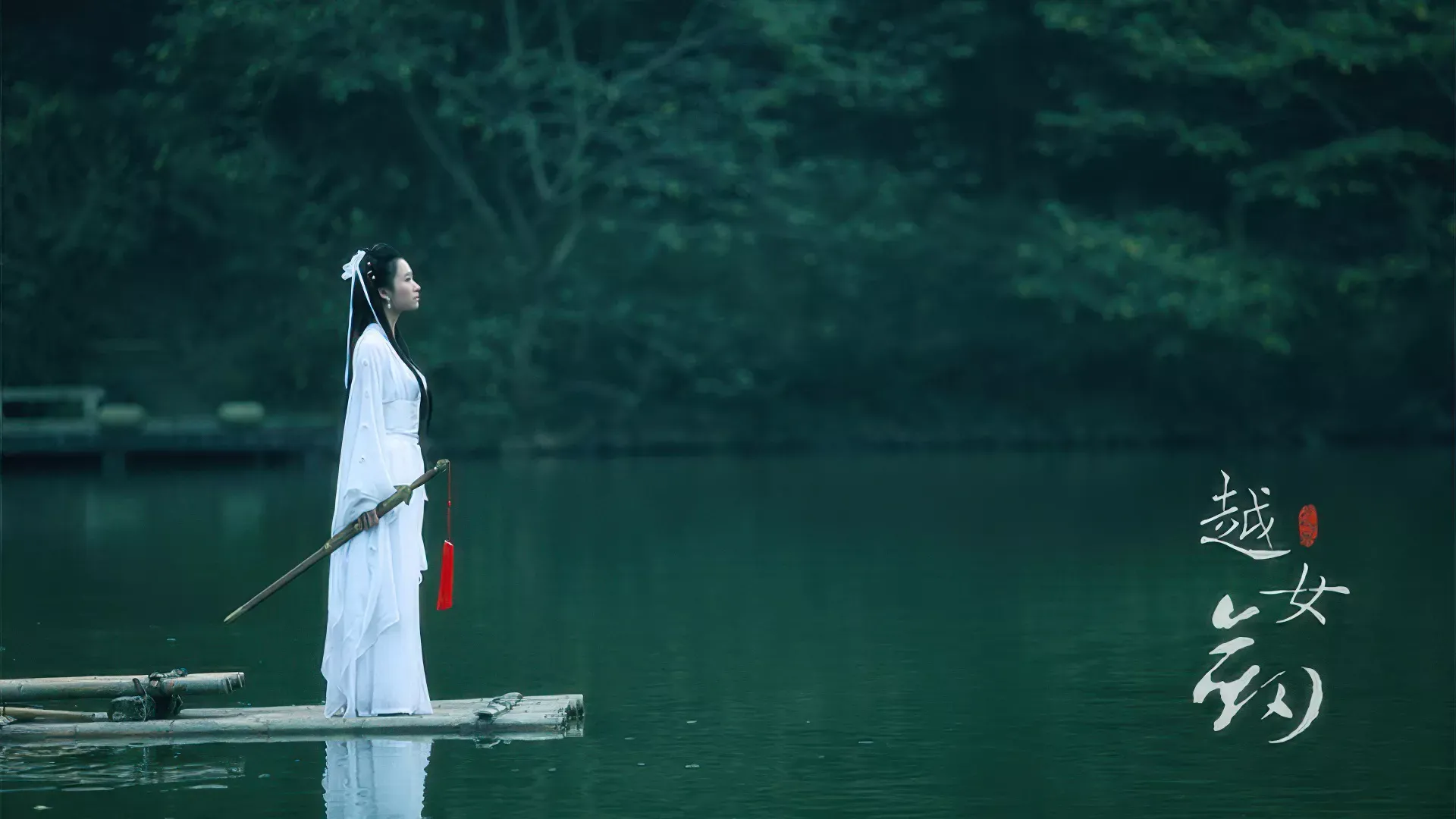State of Yue (simplified: 越国, traditional: 越國, pinyin: Yuè Guó) was one of the major states during the Spring and Autumn Period, existing up to 333 BCE. Located in modern-day Zhejiang province, Yue engaged in a legendary rivalry with the neighboring State of Wu that would ultimately lead to Yue’s victory and the destruction of Wu. The state’s most famous ruler, King Goujian, became legendary for his patience, discipline, and ultimate triumph over adversity.
The State of Yue represented a resilient and adaptive power during the Spring and Autumn Period, known for its ability to recover from defeat and ultimately achieve victory through strategic patience and military innovation. Under the leadership of King Goujian, Yue transformed from a defeated and humiliated state into a victorious conqueror, demonstrating the power of determination and strategic thinking over brute force.
The state’s martial arts development, particularly through the legendary Yue Maiden and her sword techniques, played a crucial role in Yue’s military success. Yue’s political structure emphasized the importance of wise advisors and the integration of both traditional and innovative approaches to governance and warfare.
Historical background
The Spring and Autumn Period
The Spring and Autumn Period (770-476 BCE) was a time of significant political and social change in ancient China. Following the decline of the Western Zhou Dynasty, power became decentralized among numerous feudal states, each vying for dominance and influence. This period was characterized by:
- Political fragmentation: The Zhou king’s authority diminished as regional lords gained power
- Military innovation: New weapons and tactics emerged, including the widespread use of iron weapons
- Cultural development: The period saw the emergence of Confucianism, Daoism, and other philosophical schools
- Economic growth: Trade and agriculture flourished, leading to increased prosperity in many states
Yue’s geographic and strategic position
Yue was located in the southeastern region of China, primarily in modern Zhejiang province. This strategic location provided several advantages:
- Coastal access: Proximity to the East China Sea facilitated trade and naval capabilities
- Mountainous terrain: Natural defenses provided by the region’s mountains and forests
- Agricultural resources: Fertile valleys and river systems supported population growth
- Cultural diversity: The region’s unique cultural heritage contributed to Yue’s distinct identity
History
Foundation and early history
The State of Yue emerged as a significant power during the Spring and Autumn Period, gradually expanding its influence in the southeastern region of China. The state’s early history was marked by periods of both prosperity and conflict with neighboring states, particularly the State of Wu.
Yue’s early rulers focused on consolidating their territory and developing the state’s economic and military capabilities. The state’s relative isolation from the major conflicts in the Central Plains initially allowed it to develop its own unique culture and traditions.
Conflict with Wu
The rivalry between Yue and Wu intensified when King Helü of Wu launched an invasion of Yue territory after receiving news of King Yunchang of Yue’s death. During the Battle of Zuili, King Helü was mortally wounded, setting the stage for a prolonged conflict between the two states.
King Fuchai of Wu continued his father’s aggressive policies and achieved significant victories against Yue, including the capture of King Goujian of Yue. Goujian was forced to serve as Fuchai’s servant for three years before being allowed to return to Yue, an experience that would shape his subsequent strategy for revenge.
King Goujian’s reign and revenge
King Goujian (496-465 BCE) became legendary for his methodical approach to revenge and national recovery. After his humiliating captivity in Wu, Goujian implemented his famous “sleeping on firewood and tasting bile” strategy, living in austere conditions to remind himself of his suffering and maintain his determination for revenge.
Goujian’s strategy involved two phases: “ten years to gather wealth, ten years to train troops” (十年生聚,十年教訓). This patient approach allowed Yue to rebuild its economic and military strength while maintaining the appearance of submission to Wu.
Key Elements of Goujian’s Strategy:
- Economic recovery: Rebuilding Yue’s economy and infrastructure
- Military training: Developing new fighting techniques and tactics
- Diplomatic maneuvering: Maintaining the appearance of submission while secretly preparing
- Cultural preservation: Maintaining Yue’s unique identity and traditions
Victory and triumph
Yue’s eventual victory over Wu was achieved through a combination of military innovation, strategic patience, and the development of superior martial arts techniques. The state’s forces, trained in the techniques derived from the legendary Yue Maiden, proved capable of defeating Wu’s superior weapon technology through skill and adaptability.
Organisation
Leadership structure
The State of Yue followed the traditional feudal structure of the Spring and Autumn Period, with King Goujian serving as both political and military leader. The king was supported by a council of trusted advisors, including Fan Li and Wenzhong, who played crucial roles in both governance and military strategy.
Royal Succession:
- King Yunchang (537-497 BCE) - Predecessor whose death triggered the conflict with Wu
- King Goujian (496-465 BCE) - Legendary ruler who achieved ultimate victory over Wu
Advisory system
Yue’s governance was characterized by the importance of wise advisors, with Fan Li and Wenzhong serving as key figures in both political and military decision-making. This emphasis on counsel and strategic thinking contributed to Yue’s eventual success.
Military organisation
Yue’s military was organized around both traditional forces and specialized units trained in innovative techniques. The state’s ability to adapt and learn from defeat was reflected in its military structure, which emphasized both discipline and innovation.
Martial arts
Yue Maiden Swordplay
The most significant martial arts development in Yue was the legendary Yue Maiden Swordplay, developed by the mysterious Aqing through her unconventional training with a white ape. This technique represented a revolutionary approach to martial arts, emphasizing natural movement and intuitive understanding over rigid formal training.
Military training
Yue’s military training methods evolved significantly during King Goujian’s reign, incorporating both traditional techniques and innovative approaches learned from the Yue Maiden. This adaptive approach allowed Yue’s forces to overcome Wu’s technological advantages through superior skill and flexibility.
Integration of natural talent
Yue’s martial arts philosophy emphasized the integration of natural talent with formal training, as demonstrated by Aqing’s development of the Yue Maiden Swordplay.
Philosophy
Strategic patience
The State of Yue was characterized by its philosophy of strategic patience, exemplified by King Goujian’s famous “sleeping on firewood and tasting bile” approach. This philosophy emphasized long-term planning and the willingness to endure temporary hardship for ultimate success.
Adaptive learning
Yue’s philosophy emphasized the importance of learning from defeat and adapting to changing circumstances. The state’s ability to incorporate new techniques and strategies, particularly in martial arts, was key to its eventual success.
Integration of tradition and innovation
Yue’s approach balanced traditional values with innovative methods, allowing the state to maintain its cultural identity while developing new capabilities. This philosophy was reflected in both its governance and martial arts development.
Notable members
Royal family
- King Yunchang (允常 – Yǔncháng) – King whose death triggered the conflict with Wu
- King Goujian (勾践 – Gōujiàn) – Legendary ruler who achieved ultimate victory through patience and strategy
Key advisors
- Fan Li (范蠡 – Fàn Lǐ) – Senior advisor and trusted counselor to King Goujian
- Wenzhong (文仲 – Wénzhòng) – Close friend and colleague of Fan Li, trusted advisor to King Goujian
Martial arts figures
- Aqing (阿青 – Āqīng) – Young shepherdess who developed the legendary Yue Maiden Swordplay
- Grandpa Bai (白爷爷 – Bái Yéye) – White ape who taught Aqing through playful sparring
Historical figures
- Xi Shi (西施 – Xī Shī) – One of the Four Beauties of ancient China, used in Yue’s strategy against Wu
Relationships
Rivalries
- State of Wu – Yue’s primary rival and eventual victim, with the conflict between the two states forming the central narrative of Sword of the Yue Maiden
Alliances
Yue maintained various diplomatic relationships with other states during the Spring and Autumn Period, though these were often secondary to its primary focus on the conflict with Wu.
Political connections
Yue’s political relationships were characterized by strategic pragmatism, with the state willing to use various means, including the deployment of beauty (Xi Shi) as a political weapon, to achieve its objectives.
Locations
Capital and administrative centers
- Yue Capital – The state’s primary administrative and military center, where King Goujian implemented his austere living conditions to maintain his determination for revenge
Training grounds
- Martial arts training areas – Where Yue’s forces learned and practiced the techniques derived from the Yue Maiden Swordplay
- Military bases – Centers where Yue’s forces were trained and organized for the eventual campaign against Wu
Strategic locations
- Border regions – Areas where Yue maintained defensive positions and prepared for the eventual counterattack against Wu
Cultural impact and legacy
In literature and media
The State of Yue and its victory over Wu have inspired numerous works of literature, film, and television throughout Chinese history:
Classical Literature:
- Spring and Autumn Annals of Wu and Yue (吴越春秋) - Historical text documenting the rivalry
- Tales of Swordsmen (剑侠传) - Collection of martial arts stories featuring the Yue Maiden
- Chronicles of the Eastern Zhou Kingdoms (东周列国志) - Historical novel covering the period
Modern Adaptations:
- The Legend of Wu and Yue (吴越传奇) - 1990s television series
- The Beauty of the State (国色天香) - Film adaptation of the Wu-Yue conflict
- Various stage productions and operas based on the historical events
International Influence:
- The story of King Goujian has been referenced in numerous international works on strategy and leadership
- The “sleeping on firewood and tasting bile” idiom has entered global business and leadership literature
Historical significance
Yue’s victory over Wu exemplify several important themes in Chinese history:
- The power of patience and strategy: Yue’s victory demonstrates that careful planning can overcome immediate disadvantages
- The importance of cultural resilience: Yue maintained its identity despite military defeat
- The value of innovation: Yue’s development of new martial arts techniques shows the importance of adaptation
- The role of individual determination: King Goujian’s personal discipline and focus were crucial to Yue’s success
Enduring idioms
Several Chinese idioms originated from King Goujian’s story:
- 卧薪尝胆 (wòxīn chángdǎn) - “Sleeping on firewood and tasting bile” - enduring hardship for future success
- 十年生聚,十年教训 (shí nián shēng jù, shí nián jiào xùn) - “Ten years to gather wealth, ten years to train troops” - thorough preparation and strategic patience
Behind the scenes
The State of Yue serves as a central focus in Sword of the Yue Maiden, representing themes of resilience, patience, and the power of strategic thinking over brute force. The state’s transformation from defeated victim to victorious conqueror demonstrates Jin Yong’s interest in exploring the relationship between personal discipline and political success.
Yue’s development of the Yue Maiden Swordplay through Aqing’s unconventional training methods reflects the novel’s exploration of natural talent versus formal training, a theme that appears throughout Jin Yong’s works. The state’s ability to learn from defeat and adapt its methods demonstrates the importance of flexibility and innovation in both martial arts and political survival.
The historical victory of Yue over Wu serves as a cautionary tale about the dangers of overconfidence and the importance of understanding one’s enemies, while also celebrating the power of determination and strategic patience. These themes resonate throughout Jin Yong’s works, where characters often must overcome significant disadvantages through intelligence, adaptability, and moral strength.
External links
- State of Yue on Wikipedia
- King Goujian on Wikipedia
- Spring and Autumn Period on Wikipedia
- Xi Shi on Wikipedia

